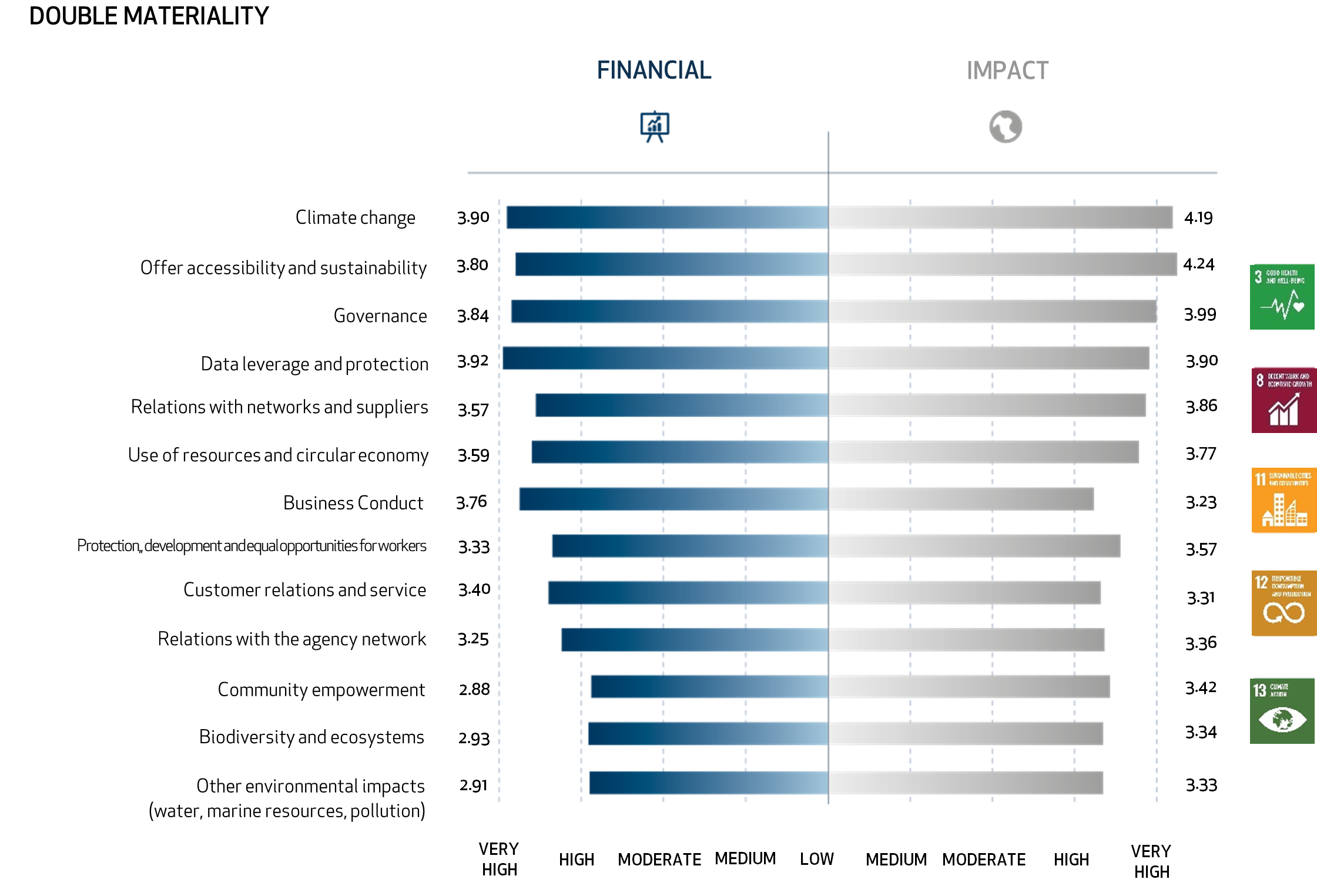Double Materiality
The identification of the most relevant topics on which the interests and expectations of stakeholders with respect to the Group are focused, on the one hand, and the strategic priorities of Senior Management, on the other, is the result of a materiality analysis process that, in the Unipol Group’s vision, is closely linked to and influenced by strategic planning processes.
In 2022, the Unipol Group carried out a new materiality analysis at the time of preparation of the new 2022-2024 Strategic Plan.
In line with the reporting standard adopted, the GRI Standards, and in particular “GRI 3: Material Topics 2021” were the first methodological reference used: this sets out the process through which the organization defines its “material topics” for reporting purposes. In view of the significant regulatory changes defined and soon to be applied in the area of sustainability reporting, with the EU institutions’ approval of the Corporate Sustainability Reporting Directive (CSRD) the assessment of material topics was set alongside and integrated with the assessment of the so-called “financial materiality”, which takes into consideration the “outside-in” dimension of the organization’s transactions with the external environment, thereby performing a “double materiality” analysis as required by the “European Sustainability Reporting Standards” (in particular “ESRS 1 – General Requirements”) prepared by EFRAG at the request of the European Commission and which will be adopted by it during 2023 and will become the reference standard on the basis of which companies falling within the scope of CSRD will be required to prepare their sustainability reports.
The company’s materiality analysis was divided into the following stages:
Identification of the relevant issues
The starting point of the process was the identification of the sustainability topics to be considered. To this end, numerous external sources, both general and specifically relating to the financial and insurance sector, were taken into account. The analysis was further supplemented with internally produced sources, such as the Observatory results for the tracking and management of emerging and reputational risks for the Group.
Identification of the priority issues
The relevance of impacts was assessed by considering a plurality of points of view and skills:
- assessment by internal Departments by involving both the Group’s Senior Management and insurance sector and the world of diversified ecosystems and companies;
- involvement of experts who, due to the organizations to which they belong and position held within them, were aware of and represented the demands of the Group’s main categories of stakeholders.
The relevance of risks and opportunities was also assessed by integrating an internal and an external point of view, namely:
- assessment by internal Departments, as specified above;
- findings of a survey on emerging risks for the Italian insurance market conducted by Unipol and involving business sector experts on the various issues to be discussed;
- analysis and summary of priorities stated by the main observers on general and business sector trends and risks.
For both dimensions, a significant role in identifying priorities was assigned to companies that act as rating providers and managers of sustainability indexes, and which are an important point of contact between reporting organizations and users of such information. The point of view of these players was integrated into the assessments by analysing the assessment methods and feedback given to the Group during the rating processes, and by conducting targeted interviews with these companies’ divisions involved in research activities.
The results of the materiality analysis were approved by the Board of Directors
In addition to engagement aimed at updating the materiality analysis, the Group implemented actions that involved stakeholders directly by means of engagement activities and continuous and structured relationships in order to understand and effectively meet the demands of customers, employees, agents, business partners, investors, institutions and the civil society.
Materiality Matrix



